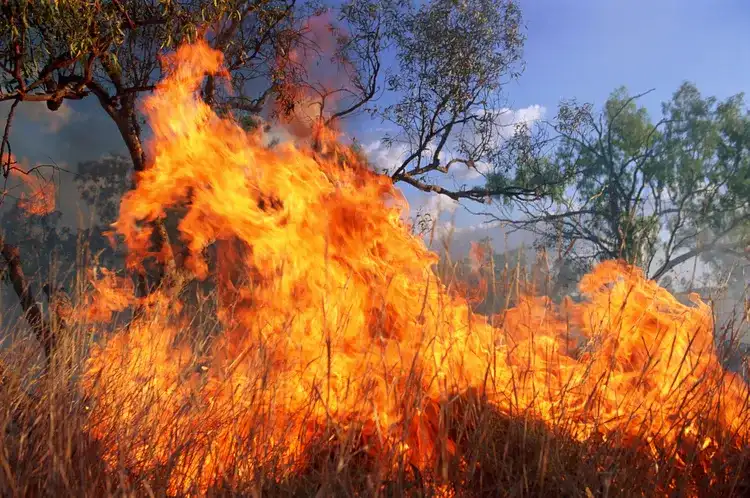Fire weather refers to specific meteorological conditions that significantly increase the likelihood of wildfires igniting and spreading. As climate change accelerates, fire weather days are becoming more frequent, more intense, and more dangerous across the globe especially in regions like the western U.S., Australia, Africa, and the Amazon.
How Fire Weather Develops
Wildfires require three main ingredients: heat, oxygen, and dry fuel. Fire weather occurs when the atmosphere provides these ingredients in abundance. The most dangerous fire weather days typically involve the following conditions:
High Temperatures
Hot air accelerates evaporation and dries out grasses, shrubs, and dead leaves turning them into volatile fuel. When vegetation reaches a low moisture threshold, it can ignite rapidly.
Low Precipitation
Prolonged dry periods or droughts deprive the environment of the moisture needed to prevent ignition. A lack of rainfall keeps surface fuels brittle and highly combustible.
Low Soil Moisture
Soil moisture serves as an indicator of how hydrated local vegetation is. Drier soil means stressed and drier plants, which burn more easily. In some cases, soil moisture can be a stronger fire predictor than even heat or rainfall.
Low Relative Humidity
Dry air draws moisture from plants and debris, lowering fuel moisture content. A relative humidity below 25% is commonly considered a threshold for high wildfire risk.
Gusty Winds
Winds act as a double threat: they feed flames with oxygen and push embers ahead of a fire’s front line. Gusty conditions also speed up drying by promoting evaporation, enabling fires to spread rapidly and unpredictably.

How Fire Weather Is Monitored
The U.S. National Weather Service (NWS), in coordination with land management agencies, actively tracks weather conditions to provide alerts when fire weather conditions are present or imminent. Two primary alerts are used:
Fire Weather Watch
This alert is issued when red flag criteria may be met within the next 24 to 72 hours. It serves as an early warning for fire departments and the public to prepare.
Red Flag Warning
A red flag warning means critical fire conditions are already occurring or expected within 12 to 24 hours. This includes high winds, low humidity, and dangerously dry fuels. Under these warnings, outdoor burning is usually banned, and fire suppression teams are put on high alert.
Understanding Red Flag Criteria
While thresholds vary by region due to differences in vegetation, terrain, and climate, red flag criteria generally include:
- Winds of at least 15 mph measured 20 feet above ground level.
- Afternoon relative humidity below 25%.
- 10-hour fuel moisture (the amount of moisture in small vegetation) at or below 10%.
The Climate Change Factor
Climate change is increasing the number and severity of fire weather days. Between 1979 and 2013, fire weather seasons lengthened by an average of 19% across one-quarter of the Earth’s vegetated regions. In the western U.S., the season has grown by an average of eight days.
In California specifically, warmer autumns and lower rainfall have caused a 20% increase in fire weather indices since the 1980s. By 2100, if these patterns continue, the state could experience a 25% increase in autumn fire weather days.
What You Can Do on Fire Weather Days
Mitigating wildfire risk during fire weather begins with changing small, everyday behaviors. Here are steps to take:
- Postpone outdoor activities involving fire: no grilling, welding, fireworks, or fire pits.
- Remove dry leaves, dead brush, and other combustibles from your yard.
- Never park or drive on dry grass the heat from your vehicle can spark a fire.
- Dispose of cigarette butts in closed containers, not on the ground.
- Report signs of smoke, fire, or fire hazards to local authorities immediately.
To stay informed, check the NOAA Storm Prediction Center’s Fire Weather Outlooks for your area.
Fire weather is no longer a seasonal inconvenience it’s an increasing threat driven by climate shifts. Understanding what fire weather is and how to prepare for it can help prevent devastating wildfires and protect communities and ecosystems alike.





